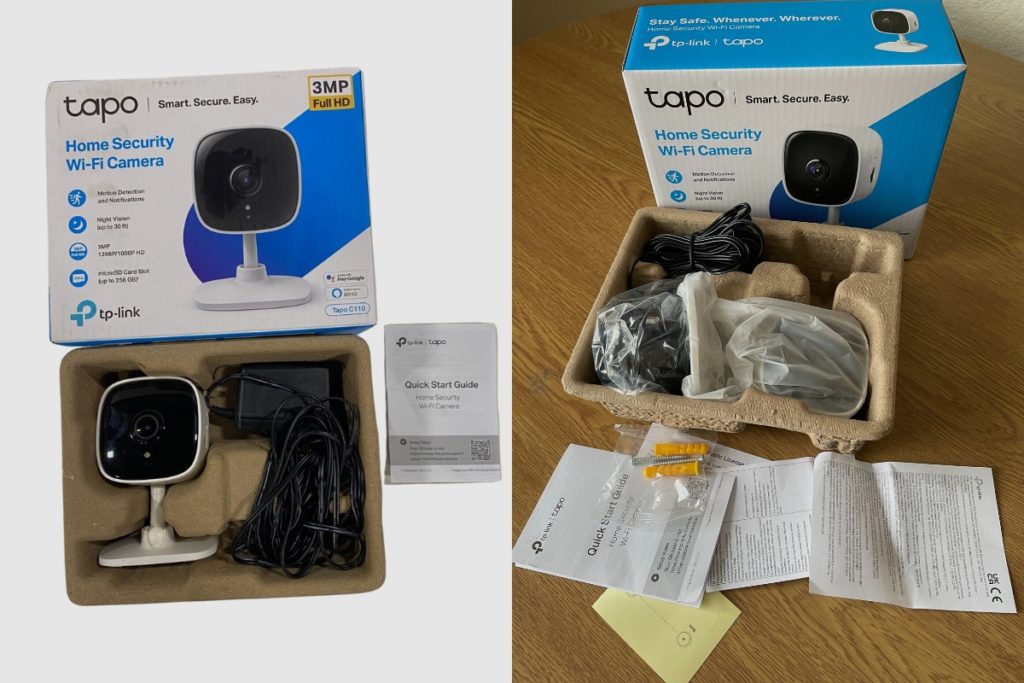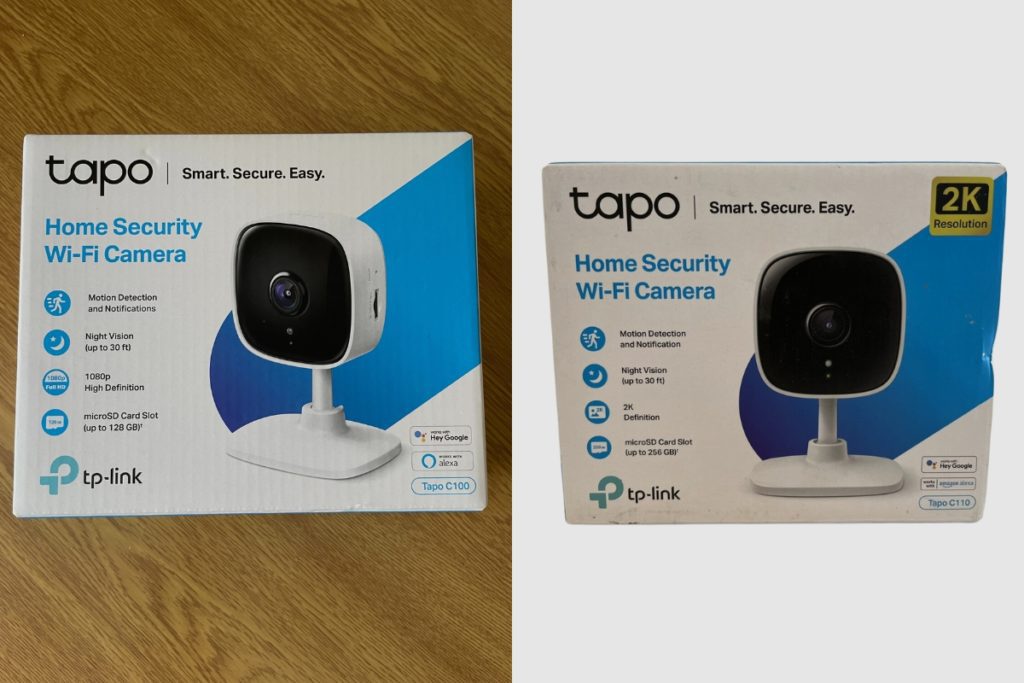In this blog post, we will explore the key differences between two of TP-Link’s most popular home security cameras – the Tapo C100 and the Tapo C110. As smart home technology becomes increasingly accessible, more people are looking to outfit their homes with devices like security cameras. However, with so many options on the market, it can get confusing trying to determine which model is right for your needs and budget.
To help simplify the decision between the Tapo C100 and C110 cameras, here is a high-level overview of how these two models compare:
Key Takeaways
- The Tapo C110 has a higher 2K video resolution compared to 1080p on the C100.
- The C110 supports cloud storage and higher capacity MicroSD cards
- The C110 normally costs $5 more but is often on sale for the same or less than the C100
- Overall, the C110 offers better features and value than the ageing C100
Related Post: TP-Link Tapo C100 Camera Review.

What is the difference between the Tapo C100 and Tapo C110 security cameras?
When evaluating home security cameras like the Tapo C100 and C110, there are a few key factors that typically differentiate the models:
Video Resolution
One of the most noticeable differences between these two Tapo cameras is the video resolution. The C100 captures footage at 1920×1080, which is a crisp full HD 1080p resolution. However, the newer C110 steps it up to 2304×1296, providing an even sharper 2K picture.
So if capturing your footage in higher definition 2K is important to you, then the Tapo C110 would be the better choice over the standard 1080p resolution of the C100.
Local and Cloud Storage
Both the Tapo C100 and C110 cameras have microSD card slots, allowing you to insert a memory card to store recorded video locally on the device. However the C110’s card slot supports larger capacity cards up to 256GB, while the C100 is limited to 128GB cards maximum.
Additionally, the C110 adds support for optional Tapo Care cloud storage subscriptions. This stores your footage in the cloud for secure offsite backup that can be accessed anywhere. The entry-level C100, fortunately, the C100 also supports cloud storage options.
So again, the C110 pulls ahead for storage, with support for larger local MicroSD cards.
Pricing and Value
Historically, the Tapo C110 carried about a $5 premium over the C100, which is very reasonable when you consider the upgrades in video resolution and storage. However, with the C100 being an older model, the C110 is frequently on sale now for the same price or even slightly cheaper than the C100.
Given the extra features and similar pricing, the Tapo C110 generally provides better overall value compared to the ageing C100 model. Unless you find the C100 at a steep discount, the small difference in price makes the C110 the smarter investment.
Conclusion
When comparing the TP-Link Tapo C100 vs C110 home security cameras, the C110 stands out as the better option overall. With its sharper 2K video resolution, expanded local and cloud storage capabilities, and very competitive pricing, the Tapo C110 simply offers superior features and value. The older C100 is still a decent 1080p camera but is outdated by the C110, making the extra $5 or less a negligible difference for a major upgrade.
So, in summary, while both cameras can meet basic home security needs, the Tapo C110 is a newer, more advanced model that is absolutely worth the very minor additional cost over the C100. Hopefully, this overview gives you the information you need to decide which Tapo camera is the right one to secure your home. Let me know in the comments if you have any other questions!
Image Gallery











